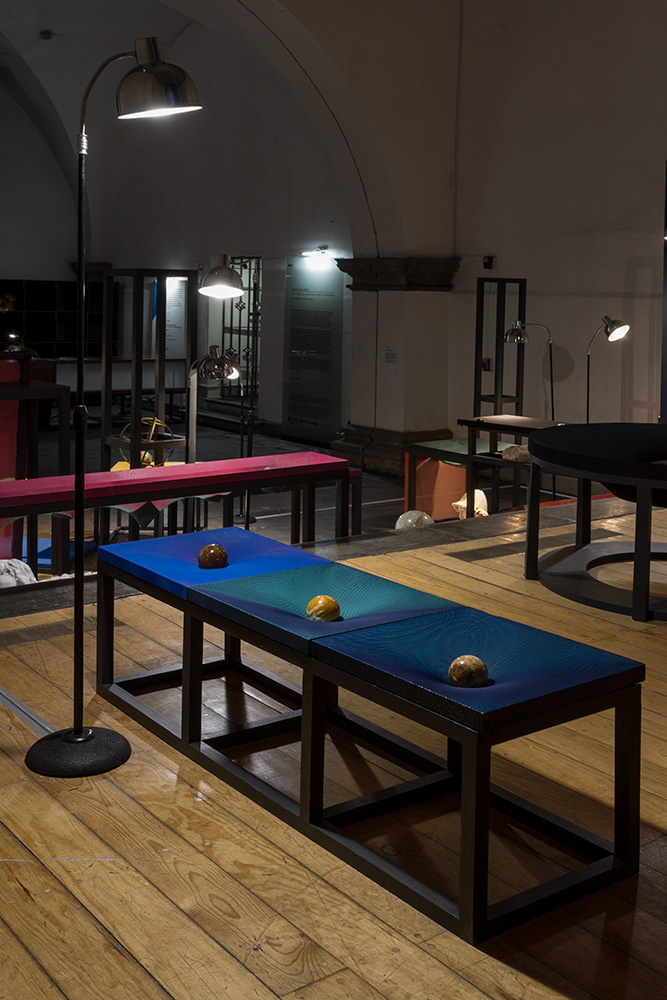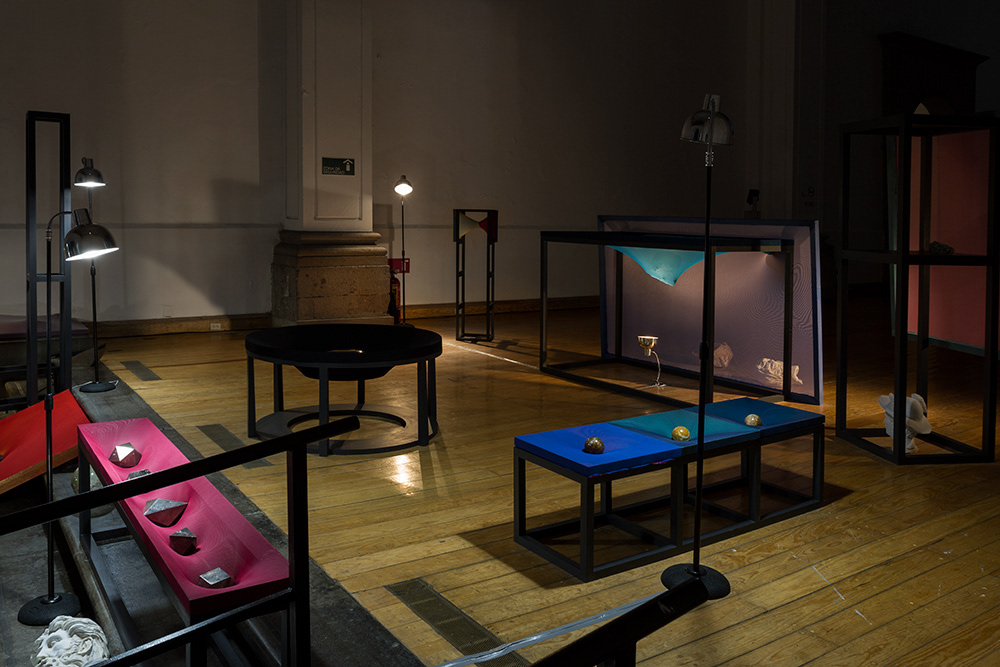














Hera's milk. 2019. Wooden frames and structures, fabric, stones, metal, marble, plaster sculptures, various objects and LED lamps
This installation explores the forces and properties of gravity, inertia, and magnetism from a relational materialist perspective, in which forces emerge as a consequence of the interplay between objects, space and time, but also from a historical perspective, by including references to sculptures of mythological gods associated with the planets and constellations that represent the forces of the cosmos through symbolic and poetic archetypes.
As approached by Albert Einstein’s general theory of relativity, gravity is the consequence of how entities warp the fabric of space-time. In consequence, bodies move across a curved universe in an optimal movement that we call gravity. This theory replaced the timeless Newtonian notion that insists that objects have an intrinsic force within them.
The installation is composed of various heterogeneous objects of different sizes and weights that modify the surfaces that contain them, as well as a collection of sculptures that refer to Greek and Roman gods associated with celestial bodies. The objects and sculptures are configured to constellate in a micro-universe that exchanges force, resistance, magnetism, potential energy and color.